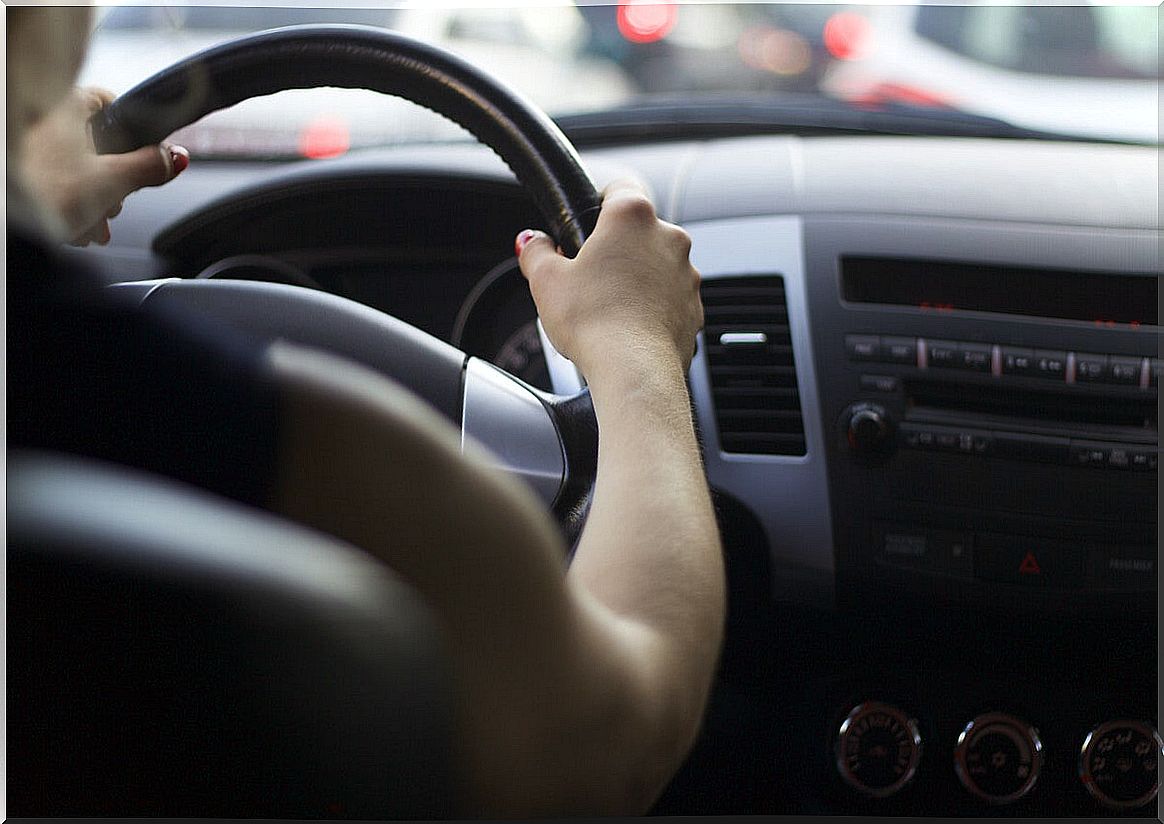Discover The Best Therapies To Overcome The Fear Of Driving

Driving phobia, or amaxophobia, affects 28% of drivers according to a study by the CEA Foundation. In this article we will talk about how to overcome the fear of driving, but first of all, we must know that phobias are anxiety disorders, classified as such in the DSM-5 (Diagnostic and Statistical Manual of Mental Disorders (2014).
These disorders are characterized by an intense, irrational and disproportionate fear of a specific object or situation; in the case of amaxophobia, fear occurs when driving.
As a general rule, and as indicated by Caballo (2002) and the Guide to effective psychological treatments by Pérez, Fernández, Fernández and Amigo (2010), the most widely used (and effective) treatments for specific phobias are: exposure therapy and cognitive therapy (specifically, cognitive restructuring).
However, we already anticipated that the key when it comes to overcoming the fear of driving is as simple as: not stop driving (exposing ourselves to the situation!).

Overcome fear of driving
Thus, we are going to talk about the two most used treatments in psychotherapy when it comes to overcoming the fear of driving: exposure therapy and cognitive therapy.
Exposure therapy
Exposure therapy is the therapy par excellence when it comes to treating specific phobias; that is, the therapy of choice in most cases (although each specific situation should be analyzed).
This type of therapy consists of exposing the person to the phobic object or situation gradually (through a hierarchy of items, from less to more anxiogens). This list is prepared by the therapist with the patient.
In the case of amaxophobia, the items will consist of situations related to driving; the first situations to overcome would be the least anxiogenic for the patient (for example approaching the car, sitting down and taking the wheel, putting the first gear …), to gradually expose him to more anxiogenic situations (driving through increasingly difficult areas, first with a companion, then alone, etc.).
To overcome the fear of driving, we must bear in mind that the ultimate goal will be for the person to be able to expose themselves to the driving situation without generating anxiety. To achieve this, it will be important that this – especially at the beginning – learn to resist the anxiety that the situation generates. The goal is for that resistance to finally become a feeling of control and dominance, until the anxiety disappears.
If the therapy works, the association between psychophysiological symptoms and the phobic stimulus disappears. Thus, in many cases, the best strategy for coping with the fear of driving is precisely not to stop driving. If it really is a disabling phobia, see a professional to help you.
Techniques to reduce anxiety
As the objective is for the person to experience the situation without feeling these high levels of anxiety, we will provide complementary strategies so that they learn to reduce their anxiety. These strategies include: breathing techniques, relaxation techniques, visualization of positive images …
Physiologically, anxiety is incompatible with a state of relaxation, since the systems that are activated with one state and another are different. This means that (although it sounds logical), we can never experience anxiety and relaxation at the same time, which makes anxiety reduction techniques essential for treating phobias.
Relaxation techniques are a key tool in another psychological therapy, the so-called systematic desensitization (similar to the exposure but with some differences).
Cognitive therapy
Another therapy that is used in psychological, useful to overcome the fear of driving, is cognitive therapy. It should be said that exposure therapy, according to Caballo (2002) and the Guide by Pérez et al. (2010), it is the most effective therapy, but it is also advisable to combine it with cognitive therapy.
Within it, what is used most frequently is the technique of cognitive restructuring . Through this technique, the dysfunctional thoughts of the patient with amaxophobia are addressed, such as: “if I drive I will have an accident”, “I will crash while driving and I will not know what to do”, “I will get lost”, etc.
The goal of cognitive restructuring is for the patient to learn to replace such catastrophic thoughts with more realistic, adaptive and functional ones (for example: “I will be able to drive without getting nervous”, “I don’t have to have an accident while driving”, “I can use the GPS in case I get lost”, etc.). It is very important to help the patient, but that he also maintains an active attitude throughout his process.
Beyond psychological therapy
Beyond psychological therapy, we leave you some general guidelines to apply that may be useful to combat the fear of driving:
Acknowledge your problem
As they say, ». So face your fear, accept that you have it, and don’t try to run away from it. You should not feel guilty or less than anyone else; In addition, we remind you that many people have amaxophobia.
Rationalize fear
Fears (and more phobias) always have irrational and catastrophic thoughts associated with them. For this reason, it will be important that you try to identify what is really causing you fear when driving: having an accident? Lose you? Block you?
Once you identify it, try to replace irrational thoughts with more realistic ones, and also think about the worst that can happen. Is it really likely to happen? What possible solutions could you apply? Ask yourself!
Take the car
This is precisely what exposure therapy is based on; in exposing yourself to the phobic situation gradually, even if it is with fear and anxiety.
In this sense, avoiding driving can lead to a process of negative reinforcement, in which you do not drive because it scares you (which reinforces you), but the less you take the car, the more fearful it will be to drive. In other words, we enter a kind of loop in which fear is gaining more and more ground.

Trust in your abilities
Phobias can be overcome, but you must trust yourself! You probably have the tools to deal with this situation, but you don’t know you have them (or don’t know how to manage them).
Whether it is that or if it is that you do not have the resources, you can always choose to go to a professional to help you overcome the fear of driving. You are not alone in this!









